Removal Procedure
Caution: Refer to Approved Equipment for Collision Repair Caution in the Preface section.
Important: When replacing panels that involve servicing of stationary glass, refer to Adhesive Installation of Stationary Windows before performing any priming or refinishing.
- Disable the SIR system. Refer to SIR Disabling and Enabling in SIR.
- Disconnect the negative battery cable. Refer to Battery Negative Cable Disconnection and Connection in Engine Electrical.
- Remove all related panels and components.
- Repair as much of the damage as possible to factory specifications. Refer to Dimensions - Body .
- Note the location and remove the sealers and anti-corrosion materials from the repair area, as necessary. Refer to Anti-Corrosion Treatment and Repair in Paint and Coatings.
- Perform the necessary procedures to gain access to the repair. Refer to Quarter Panel Replacement - Lower , Quarter Panel Replacement - Upper , or to Rocker Panel Replacement .
- Cut the panel where sectioning is to be performed.
- Locate and drill out all factory welds. Note the number and location of the welds for installations of the service part.
- Remove the damaged rear pillar section.
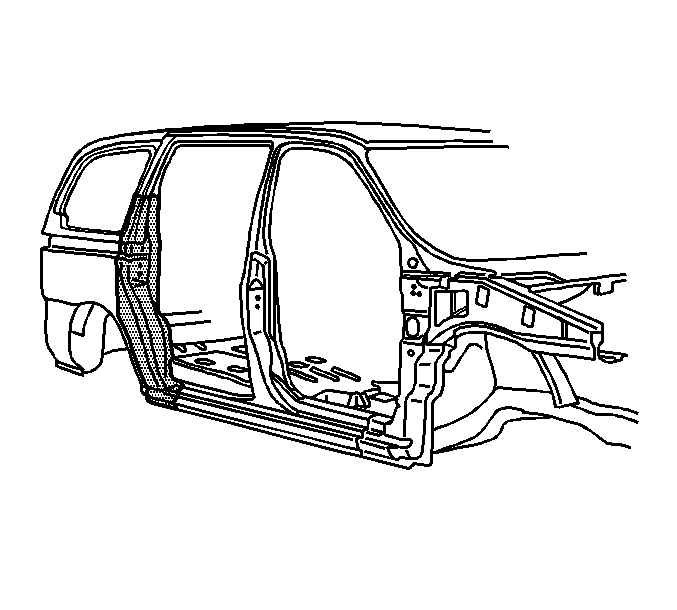
Caution: Refer to Foam Sound Deadeners Caution in the Preface section.
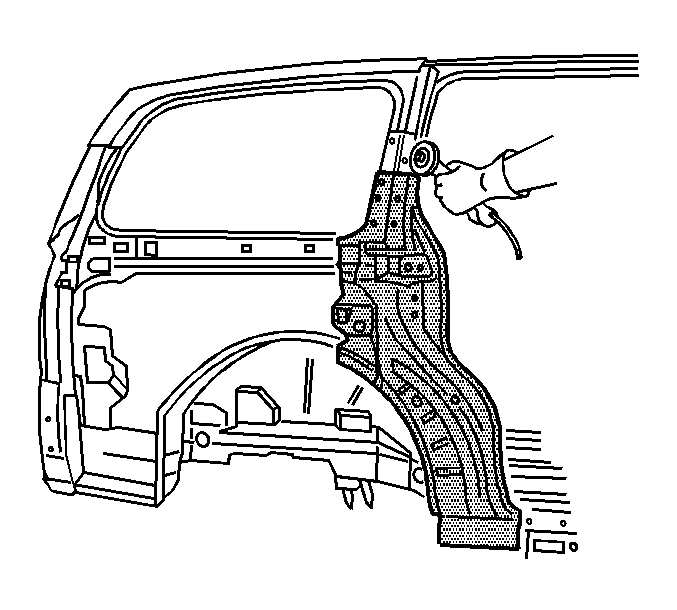
Important: Do not damage any inner panels or reinforcements.
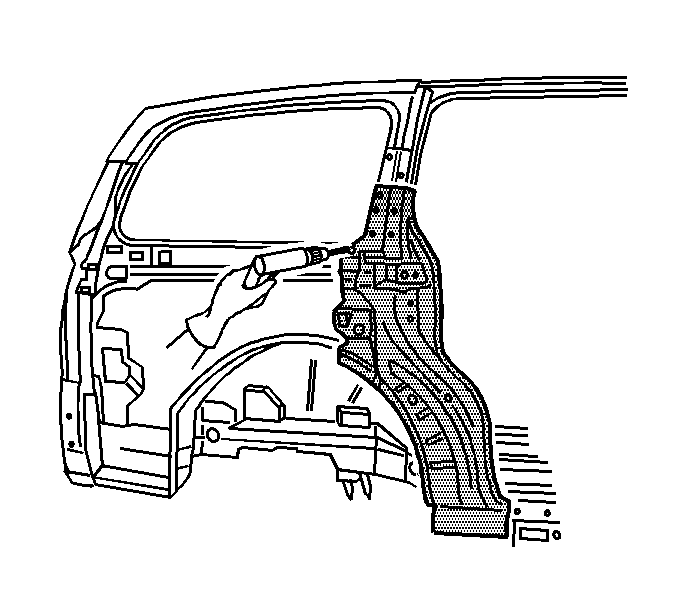
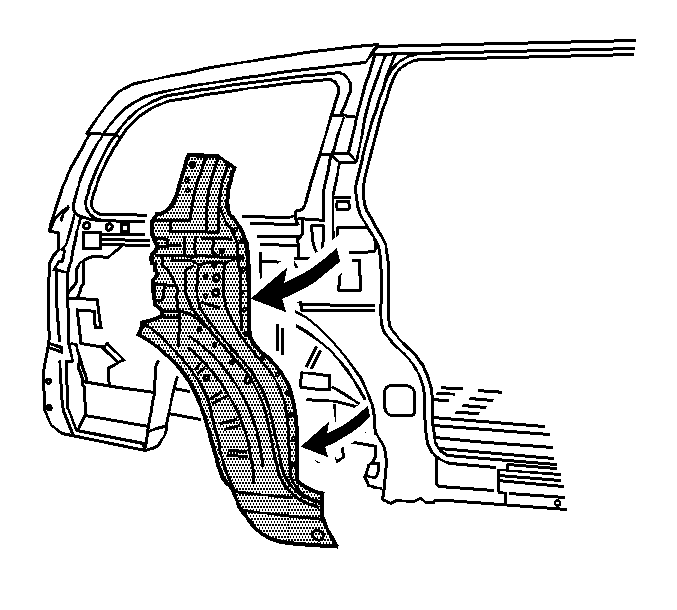
Installation Procedure
- Cut the replacement rear pillar section in corresponding locations to fit the original panel. The sectioning joint should be trimmed to allow 1.5 time the metal thickness at the sectioning joint.
- Create a 50 mm (2 in) backing plate (a) from the unused portion of the service part. Trim the backing plate as necessary to fit behind the sectioning joint where there is no reinforcement.
- Drill 8 mm (5/16 in) plug weld holes along the sectioning cut on the remaining original part. Locate these holes 13 mm (½ in) from the edge and spaced 40 mm (1½ in) apart.
- Drill 8 mm (5/16 in) plug weld holes in the service part as necessary in the locations noted from the original panel and along the sectioning cut.
- Prepare all mating surfaces as necessary.
- Apply 3M® Weld-Thru coating P/N 05916 or equivalent to all mating surfaces
- Fit the backing plate halfway into the sectioning joint, clamp and plug weld to the vehicle.
- Position the rear lock pillar.
- Plug weld accordingly.
- Stitch the weld sectioning joint.
- Complete the necessary procedures. Refer to Quarter Panel Replacement - Lower , Quarter Panel Replacement - Upper , or to Rocker Panel Replacement .
- Clean and prepare all welded surfaces.
- Apply the sealers and anti-corrosion materials to the repair area, as necessary. Refer to Anti-Corrosion Treatment and Repair in Paint and Coatings.
- Paint and repair the area. Refer to Basecoat/Clearcoat Paint Systems in Paint and Coatings.
- Install all related panels and components.
- Connect the negative battery cable. Refer to Battery Negative Cable Disconnection and Connection in Engine Electrical.
- Enable the SIR system. Refer to SIR Disabling and Enabling in SIR.

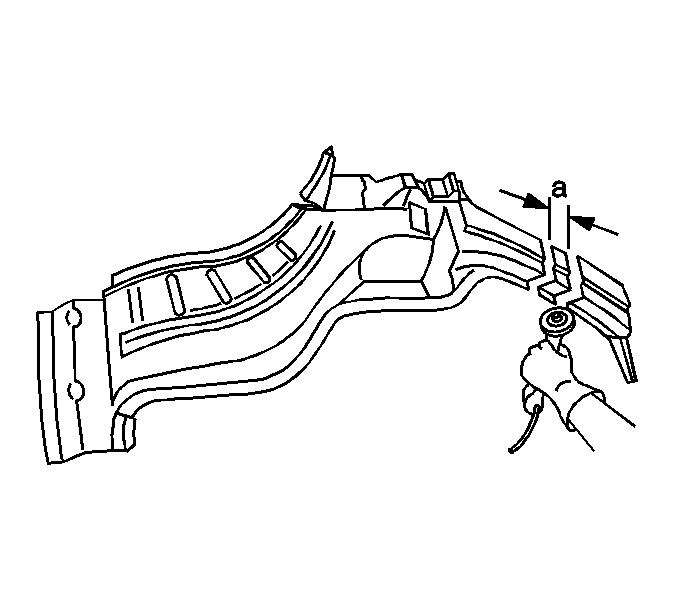
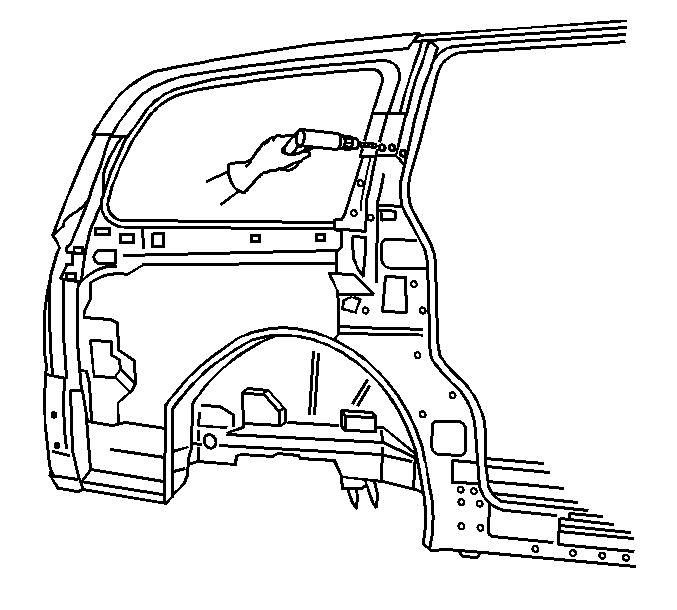
Important: If the location of the original plug weld holes can not be determined, or if structural weld-thru adhesive is present, space the plug weld holes every 40 mm (1½ in) apart.
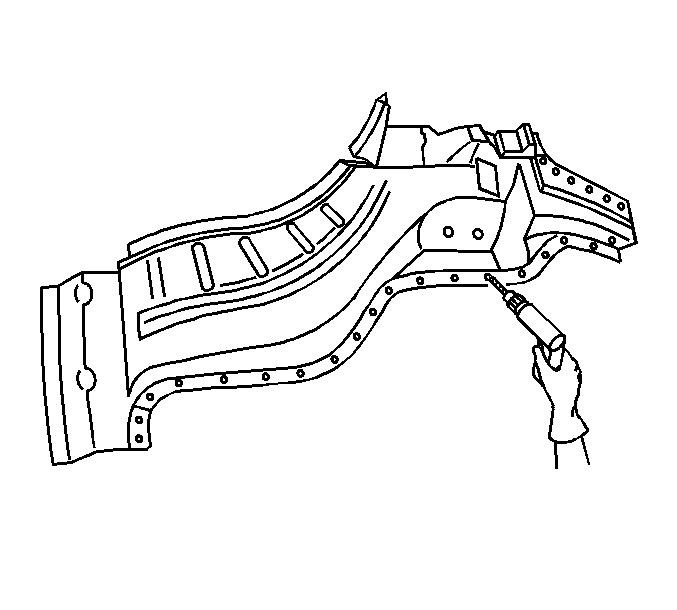
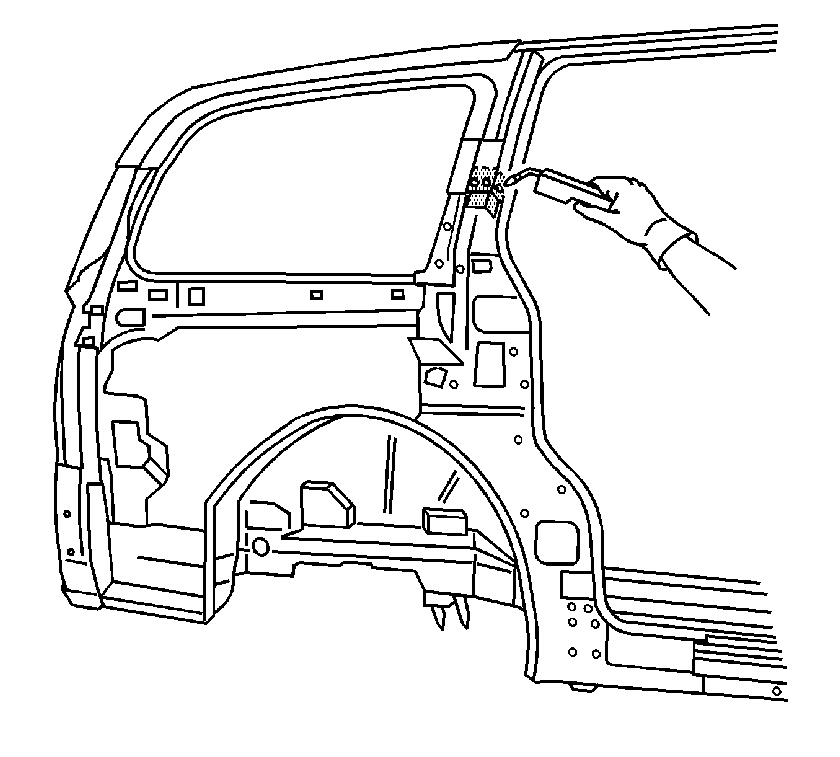

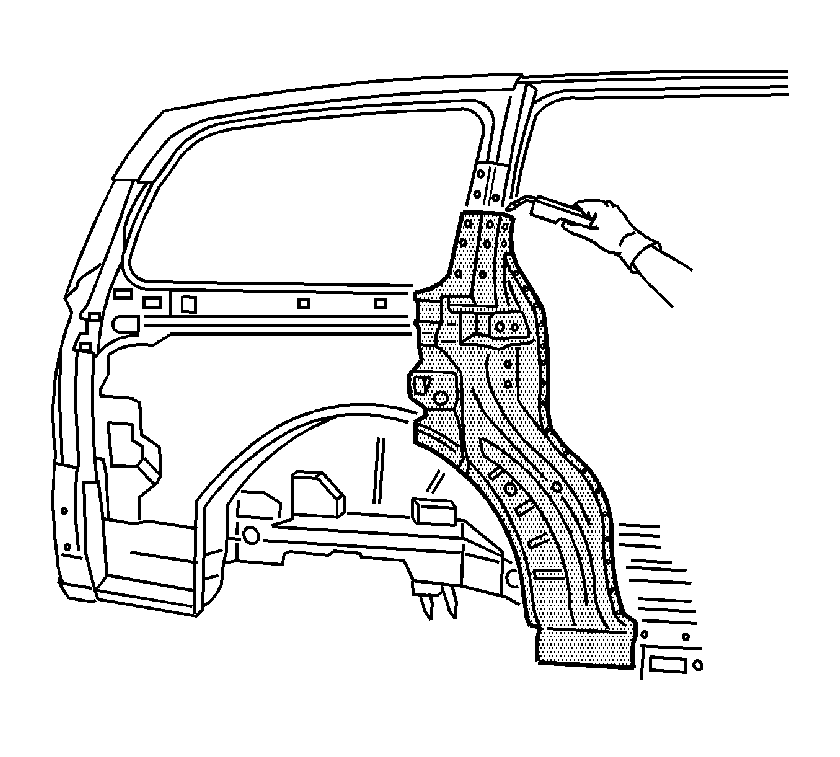
Important: To create a solid weld with minimum heat distortion make 25 mm (1 in) stitch welds along the seam with 25 mm (1 in) gaps between them. Then go back and complete the stitch weld.
